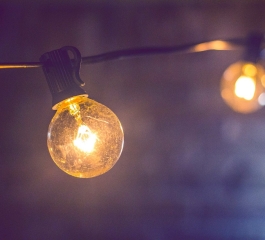Photovoltaic solar panels
Photovoltaic solar panels are a popular option for producing electricity at home. They work by converting sunlight into electricity through the use of photovoltaic cells.
These panels are installed on the roof of the house or in external areas with good sun exposure.
To use photovoltaic solar panels, it is necessary to carry out a proper installation, which involves choosing the ideal place to place the panels, connecting them to the home’s electrical system and installing an inverter, which converts the electricity generated through the panels in alternating current, used in most electrical appliances.
Benefits of Using Solar Energy
Solar energy is a clean, renewable form of electricity generation that uses sunlight as an energy source. Unlike fossil fuels, which emit polluting gases and contribute to global warming, solar energy is sustainable and does not harm the environment.
There are many benefits to using solar energy for both the environment and consumers. One of the main benefits is the reduction of greenhouse gas emissions.
By opting for solar energy, dependence on non-renewable sources such as coal and oil, which are responsible for a large part of polluting emissions, is reduced.
In addition, the use of solar energy contributes to the economy of natural resources. Sunlight is an inexhaustible source of energy and does not generate additional costs after installing the photovoltaic system.
This means that by investing in solar panels, consumers can significantly reduce their electricity bill over time.
Another benefit of solar energy is the possibility of distributed generation. With this modality, consumers can generate their own electricity through solar panels installed in their homes or commercial establishments.
This allows for greater energy autonomy, reducing dependence on the conventional electrical grid.
Solar energy is also an excellent option for remote areas or those with difficult access to the electrical grid.
With the installation of photovoltaic systems, it is possible to bring electricity to rural regions, isolated communities and even campsites and recreational vehicles.
In addition to the environmental and economic benefits, the use of solar energy also contributes to the valuation of the property.
Houses and buildings with solar energy systems are more attractive in the real estate market, as they represent energy savings and concern for the environment.
In summary, the benefits of using solar energy are numerous. In addition to being a clean and renewable source, it contributes to reducing polluting emissions, saving natural resources, distributed generation and valuing real estate.
So investing in solar energy is a smart choice for both the environment and the consumer’s pocket.
Wind turbines
Wind turbines are another option for producing electricity at home. They work by capturing the kinetic energy of the wind and turning it into electricity. Just like solar panels, wind turbines are installed in outdoor areas, such as the roof or the garden of the house.
Wind turbines can be installed in both urban and rural areas, as long as there is constant enough wind to generate energy. In addition, it is important to consider the height of the tower where the turbine will be installed, to ensure that it is above obstacles that can block the wind.
Advantages of producing electricity at home
The production of electricity at home brings several advantages. In addition to reducing your electricity costs in the long run, it also allows for greater energy independence, as you are not completely dependent on the public power grid.
In addition, by using renewable energy sources, you will be contributing to the preservation of the environment and to the reduction of polluting gas emissions.
Final considerations
Producing electricity at home is a viable and sustainable option today. With increasingly advanced and accessible technology, it is possible to take advantage of available natural resources to generate clean and renewable energy.
However, it is important to consider the initial investment needed to install the power generation systems and assess whether they are financially viable in the long term.


